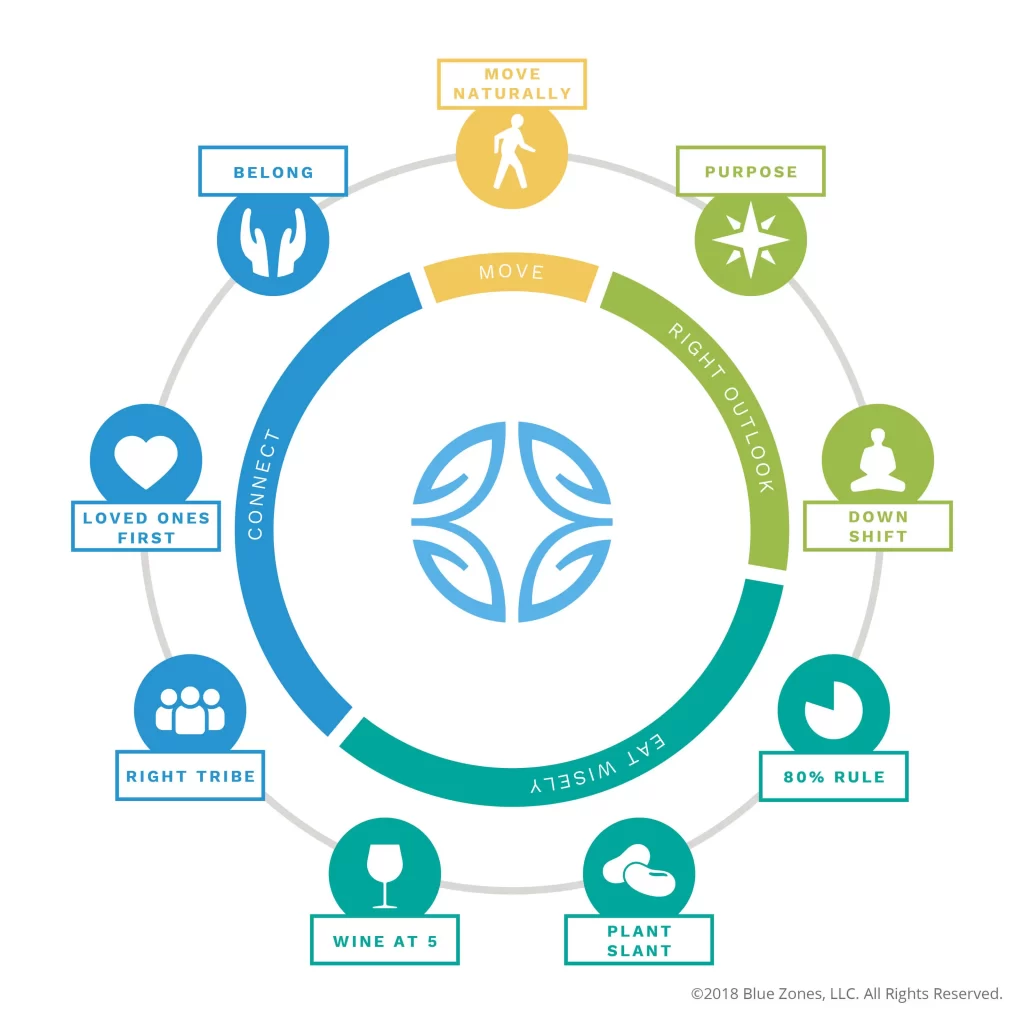
Dan Buettner’s book Blue Zones Solution: Eating and Living Like the World’s Healthiest People is published. It is a follow up to his 2008 book The Blue Zones: Lessons for Living Longer From the People Who’ve Lived the Longest. I don’t drink wine, so I replaced that one with “Grow a Garden”, which is also on the Blue Zones website. Community is another addition for the Blue Zones website.
Changing the built environment to allow people to move naturally more often is an important part of good urban planning.
Move Naturally
Move more, move often.
Grow a Garden
Good exercise, good food, good spirit.
Plant Slant
Beans are cornerstone, plus vegetables, fruit, and whole grains.
80% Rule
Eat and converse with family or friends.
Rest Enough
Sleep enough and down shift (e.g., pray, nap, hangout).
Purpose
Purpose driven life.
Loved Ones First
Put loved ones first.
Belong
Be part of a faith-based community.
Right Tribe
Have close friends and strong social networks.
Community
Taking focus off ones problems and focusing on making a better community deflates and diminishes the overwhelming problems of oneself.
